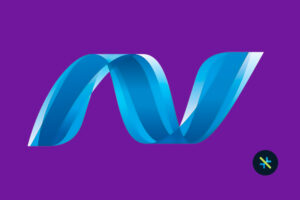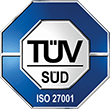The software development ecosystem takes a giant leap forward with each iteration of development frameworks and libraries, empowering developers to create cutting-edge applications with more powerful, efficient, and secure tools each time. Among these advancements, the much-anticipated official release of .NET 8 in November 2023 has been already sending ripples of excitement through the developer community.
Microsoft’s powerful open-source development platform .NET has been a driving force in the software industry for years. With each new version, it has consistently raised the bar in terms of performance, features, and security.
The latest .NET 8 is not expected to be just another version of the framework, but it is a culmination of years of research, development, and community feedback. With this release, Microsoft aims to redefine the way software applications are built and deployed, enabling developers to meet the evolving demands of modern computing.
Let’s explore all the enhancements and new features that are soon to be available with this upgraded version of .NET 7 to drive groundbreaking changes in software development.
Performance Enhancements in .NET 8
Improving and optimizing performance is always a concern for .NET developers. They constantly seek ways to optimize code execution, reduce latency, and enhance overall application responsiveness. With .NET 8, developers can rejoice as this version brings a host of performance improvements that elevate the framework’s capabilities to new heights.
1. Native Ahead-of-Time (AOT) Compilation
Native ahead-of-time (AOT) Compilation is a groundbreaking technology that takes .NET 8’s performance to a new level. Unlike traditional just-in-time (JIT) compilation, where code is compiled to machine code at runtime, Native AOT compiles managed code directly into native machine code during the build process. Native AOT enables the creation of a self-contained version of the app that does not require a separate runtime, bundling everything into a single file.
The benefits of Native AOT are profound and far-reaching. To understand the significance of Native AOT, let’s delve into the key aspects of this performance improvement:
- Improved Startup Time: In traditional JIT compilation, the first execution of a method incurs a compilation delay, impacting application startup times. However, with Native AOT, this overhead is eliminated since the compilation process occurs during the build phase. Consequently, .NET 8 applications experience minimal warm-up times and respond instantaneously to user interactions.
- Reduced Memory Footprint: By compiling directly to native code, Native AOT reduces the memory footprint of .NET applications. This optimization is particularly valuable in resource-constrained environments, such as mobile devices and cloud-based servers, where efficient memory usage is critical for smooth application performance.
2. Code Generation Enhancements
Code generation is the process of converting high-level programming constructs into low-level machine code that can be executed by the hardware. The efficiency of code generation plays a vital role in optimizing software performance. The .NET 8 iteration introduced some significant code generation enhancements which can contribute to faster and more efficient execution of .NET applications.
- Advanced Memory Management: .NET 8 incorporates advanced memory management techniques in its code generation process, leading to optimized memory usage. By reducing memory fragmentation and improving memory locality, applications can better leverage system resources, resulting in smoother performance and reduced memory-related bottlenecks.
- Enhanced Optimization Techniques: To maximize the efficiency of code execution, .NET 8 introduces enhanced optimization techniques in its code generation process. The compiler intelligently analyzes the code, identifies opportunities for optimizations, and generates highly efficient machine code. These optimizations range from loop unrolling and constant folding to inlining and dead code elimination, resulting in faster and more streamlined execution paths.
- Hardware-Specific Instructions: One of the most significant improvements in .NET 8’s code generation is its ability to leverage hardware-specific instructions. By generating code that utilizes specialized instructions available on modern CPUs, such as SIMD (Single Instruction, Multiple Data) instructions, .NET 8 significantly boosts the performance of applications that perform vectorized computations and data parallelism.
3. System.Text.Json Serialization Improvements
Serialization is a fundamental process in modern software development that allows data to be converted into a format suitable for transmission and storage. In the .NET ecosystem, JSON (JavaScript Object Notation) has emerged as the de facto standard for data interchange due to its simplicity, readability, and widespread support. With the release of .NET 8, the System.Text.Json library receives substantial improvements, making it a robust and efficient choice for JSON serialization.
- Improved Performance: One of the primary goals of the System.Text.Json improvements in .NET 8 is to enhance serialization and deserialization speeds. By fine-tuning the underlying algorithms and optimizing memory usage, .NET 8 achieves faster JSON processing, resulting in reduced latency and improved overall application performance.
- Handling of Complex Data Structures: The improved System.Text.Json library in .NET 8 boasts enhanced support for handling complex data structures. This includes support for nested objects, multi-dimensional arrays, and non-primitive types, ensuring that even the most intricate data hierarchies can be efficiently serialized and deserialized.
- Custom Serialization: Developers often encounter scenarios where custom serialization logic is required to handle specific data structures or to achieve better performance. In .NET 8, the System.Text.Json library allows developers to define custom serialization and deserialization logic for their types, offering more flexibility and control over the serialization process.
- Support for Large JSON Documents: With the growing prominence of Big Data and large-scale applications, the demand for handling massive JSON documents has surged. .NET 8’s System.Text.Json enhancements address this requirement by optimizing memory usage during serialization and deserialization, ensuring that applications can efficiently handle large JSON payloads without memory constraints.
Security Enhancements
Security is of paramount importance in software development, especially in today’s interconnected world where cyber threats are constantly evolving. Microsoft places a strong emphasis on enhancing the security of .NET applications in .NET 8, introducing a range of features and techniques to safeguard the software supply chain and protect applications from potential vulnerabilities.
1. Secure Software Supply Chain Capabilities
With the proliferation of open-source dependencies and third-party components, it is crucial to ensure that these components are authentic, unaltered, and free from security vulnerabilities. .NET 8 addresses this concern by enabling cryptographic signing of assemblies, allowing developers to verify the authenticity and integrity of dependencies before they are integrated into the application.
Moreover, secure source control practices are emphasized in .NET 8, facilitating the use of signed Git commits and ensuring that the source code remains secure throughout its development lifecycle. By enforcing secure source control practices, .NET 8 minimizes the risk of unauthorized changes and malicious code injections, reinforcing the integrity of the application’s source code.
2. Improvements to Auth and Identity in ASP.NET Core
The ASP.NET Core is improving authentication, authorization, and identity management (collectively referred to as “auth”) in .NET 8. New APIs will make it easier to customize the user login and identity management experience. New endpoints will enable token-based authentication and authorization in Single Page Applications (SPA) with no external dependencies.
Some Key Features of .NET 8
With the release of .NET 8, Microsoft has a plethora of exciting features that empower developers to create applications with unprecedented ease and efficiency.
- Dependency Injection (DI)-friendly Metrics APIs: In .NET 8, the introduction of Dependency Injection friendly metrics brings seamless integration of performance tracking and analysis. This empowers developers to effortlessly monitor and optimize application health through a well-structured and modular metric management system.
- Serializing Properties from Interface Hierarchies: Advanced support for serializing properties from interface hierarchies has been introduced in .NET 8, which helps in simplifying complex data structures by seamlessly handling inheritance relationships, resulting in more concise and efficient serialization processes while maintaining code clarity and extensibility. This enhancement enhances data interchange capabilities and code maintenance within diverse application scenarios.
- DevOps Improvements: DevOps experiences receive a boost in .NET 8 with streamlined containerization and enhanced orchestration capabilities, facilitating smoother integration of CI/CD pipelines and enabling more efficient deployment and scaling of applications, fostering a more cohesive and automated development-to-production workflow. These improvements empower teams to deliver software more reliably and rapidly, aligning with modern DevOps practices.
- Function Pointers Introspection Support: .NET 8 introduces Function Pointers Introspection Support, enabling dynamic inspection and manipulation of function pointers at runtime, fostering enhanced flexibility and adaptability in handling delegate-based operations within the application architecture. This feature empowers developers to perform intricate tasks with greater precision and efficiency, further enriching the .NET ecosystem.
- GetItems() Method: Imagine a scenario where specific items are needed to be retrieved from a collection efficiently. Enter the GetItems() method, a powerful addition to .NET 8 that simplifies data access like never before. Unlike traditional approaches using LINQ queries or loops, the GetItems() method offers a streamlined and direct way to access data elements, saving developers valuable time and effort. Whether it is dealing with large datasets or the need to optimize real-time data retrieval, GetItems() shines as the go-to method for accessing collection elements with unparalleled efficiency.
- Shuffle() Method: Games, simulations, and randomization algorithms all have one thing in common – the need for a reliable shuffling mechanism. Enter the Shuffle() method, a dynamic feature that brings randomness to collections with effortless elegance. .NET 8’s Shuffle() method ensures that elements in a collection are randomly re-ordered, injecting a touch of unpredictability into your applications. From creating randomized quizzes to enhancing user experiences, Shuffle() empowers developers to breathe life into their applications with its simplicity and versatility.
- Dotnet Publish & Dotnet Pack Commands: The deployment and packaging process is a crucial aspect of software delivery, and .NET 8 introduces game-changing improvements to the dotnet publish and dotnet pack commands. With enhanced packaging and streamlined deployment configurations, developers can now produce production-ready code with unparalleled ease. The dotnet publish and dotnet pack commands are now equipped to produce self-contained executables, streamlining the deployment process even further. This means applications can be packaged with all their dependencies, making them more portable and independent of the target environment. Whether you’re deploying to a cloud infrastructure or sharing applications across different platforms, .NET 8’s improved commands ensure smoother, faster, and more reliable deployment workflows.
In conclusion, .NET 8 is a game-changing release that brings a wealth of new features and improvements to the table.
Leverage .NET 8 for Efficient Application Development
The journey with .NET 8 is an opportunity to explore endless possibilities and make a lasting impact in the world of technology. With an unwavering dedication to excellence and innovation, developers can usher in a new era of software solutions that inspire, transform, and leave a lasting legacy.
Ready to begin your journey with .NET 8? We at KANINI have experienced software developers who will guide you with the nuances of creating applications using .NET 8, throughout the application development lifecycle. As a trusted Microsoft partner, we assure you that you get the best out of .NET 8 for developing your applications. Reach out to us today!
Author

Edwin Peter
Edwin is a Solution Architect at KANINI. Bringing 20+ years of IT experience spanning presales, application development & architecting, app modernization, and legacy migration combined with deep knowledge across Telecom, Oil & Gas, IFE, HCM, and Healthcare, Edwin is a true cross-domain solution expert. He is well-versed with both – Windows and Unix/Linux platforms and proficient with .NET, Angular, Azure, and legacy technologies like C/C++/VC++, Perl, and Shell Script.








